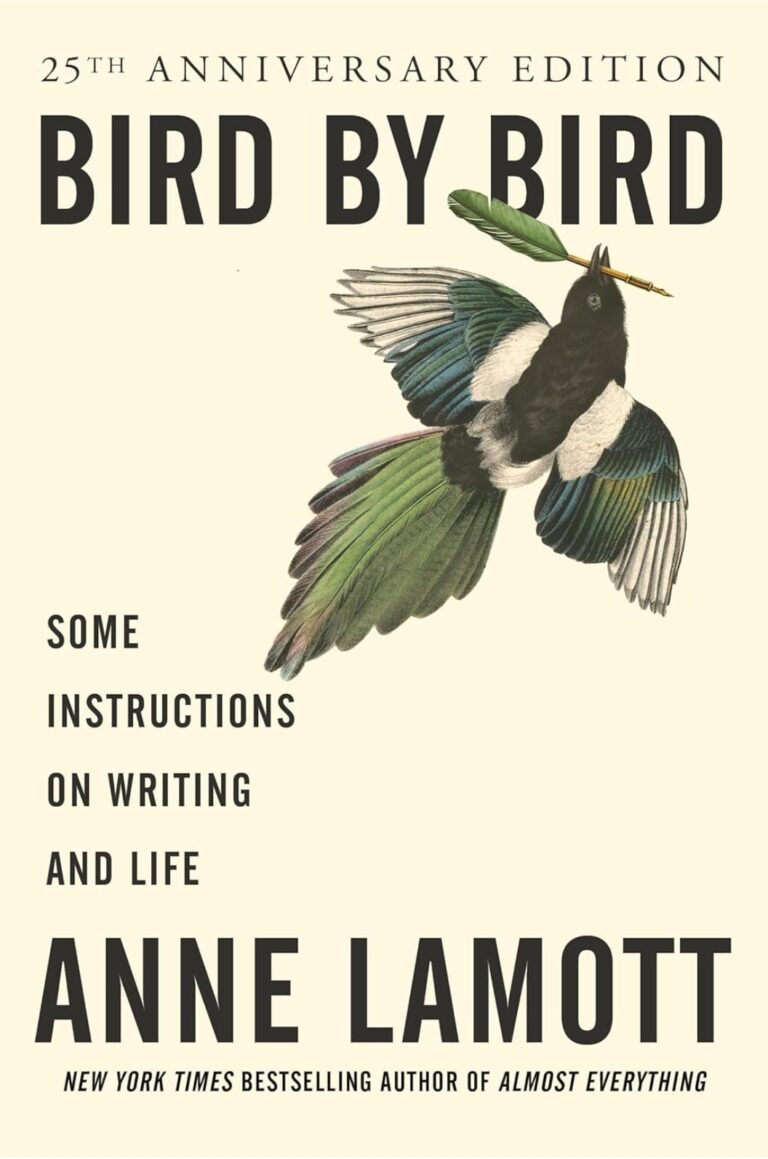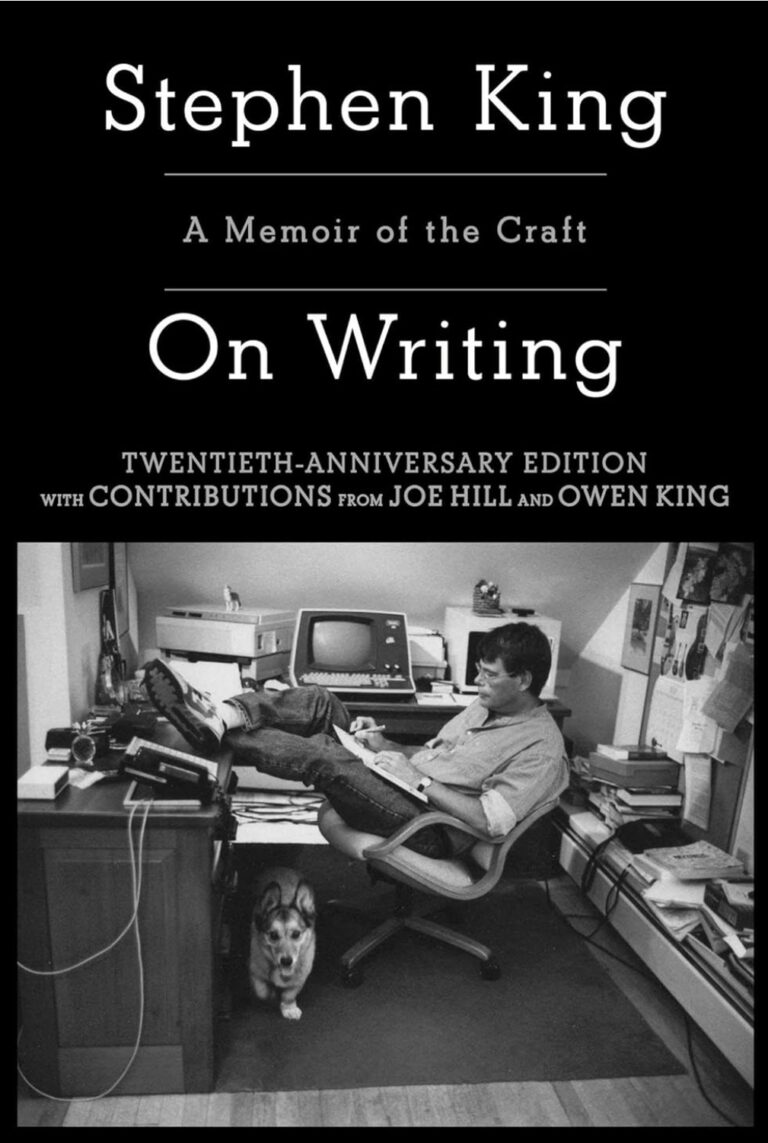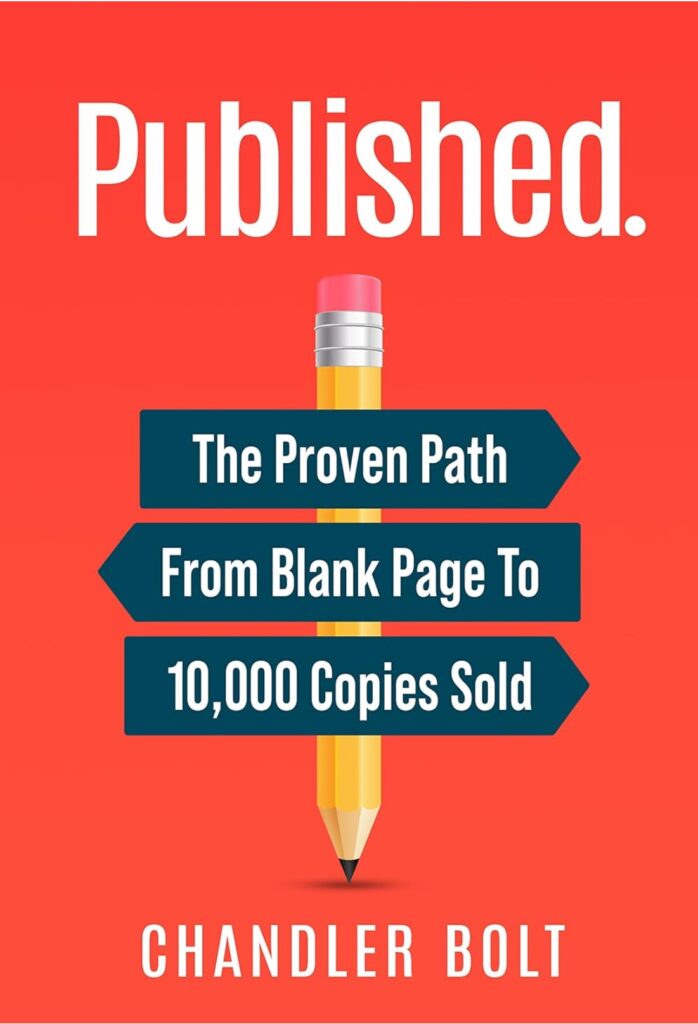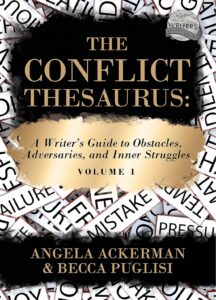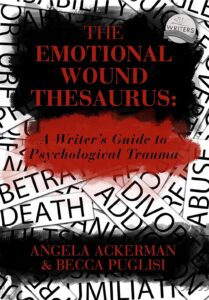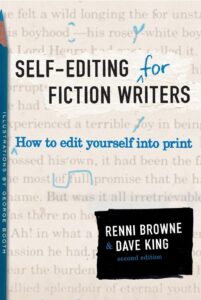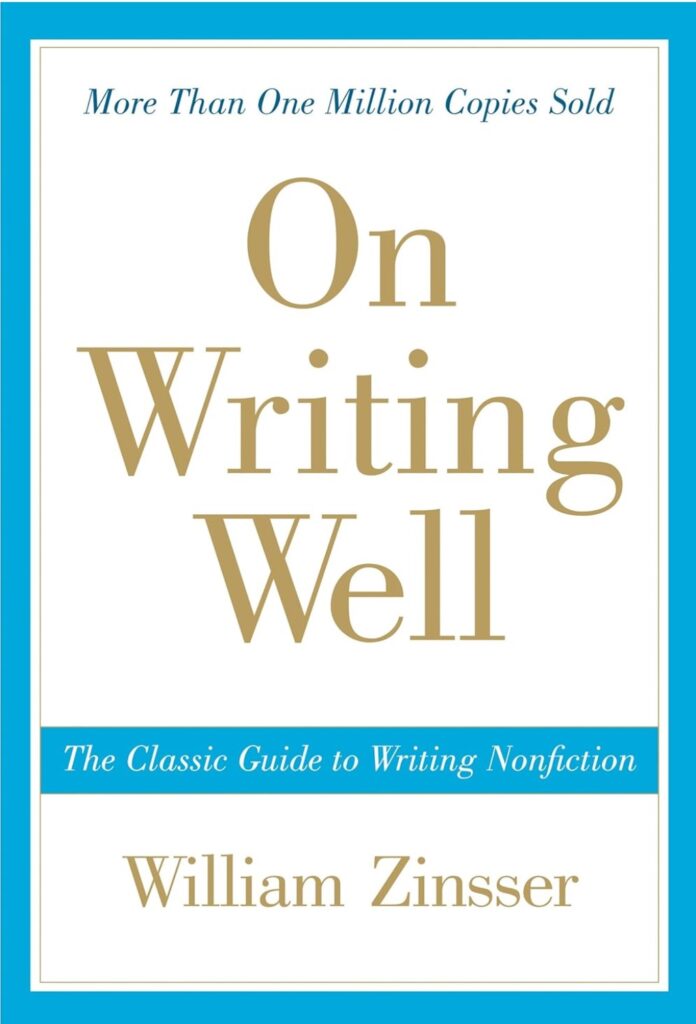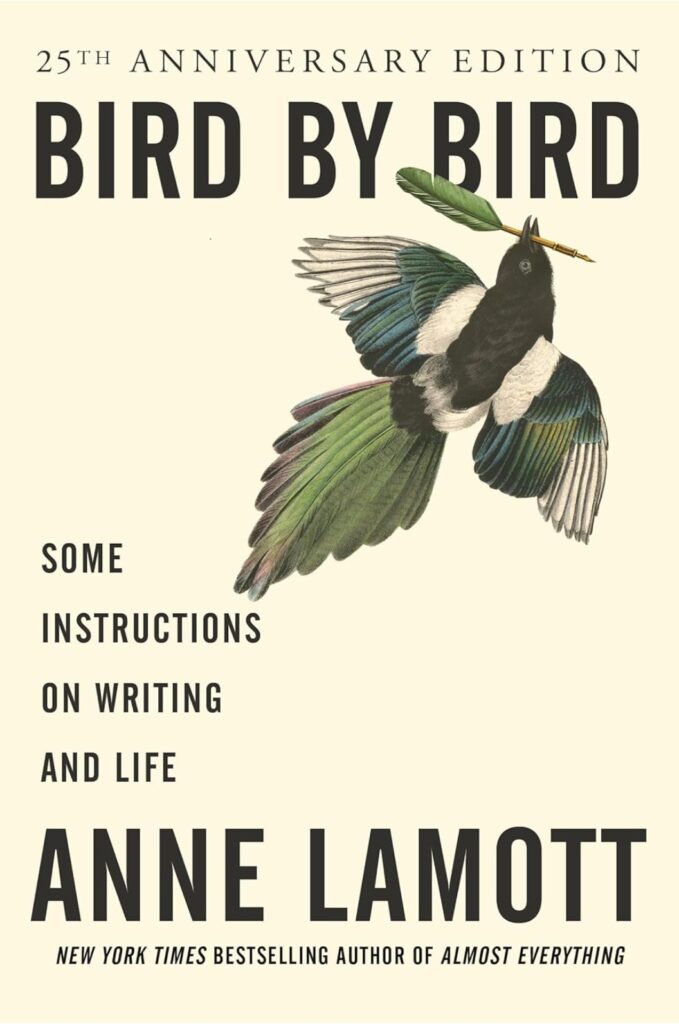Table of Contents
ToggleA
Welcome to the “A” section of the Romance Writing Lexicon. This section contains a comprehensive list of terms and concepts crucial to the craft of romance writing.
Whether you’re a seasoned author or just starting, these entries will help you navigate the specialized language of the romance writing industry.
Understanding these terms can enhance your writing, improve your storytelling, and connect you more deeply with your readers.
Accidental Pregnancy: A trope where a character becomes pregnant unexpectedly, often leading to romantic complications and growth.
Action-Adventure Romance: A sub-genre combining action-packed adventures with romantic plotlines.
Age Gap Romance: A romance between characters with a significant age difference.
Allegory: A story in which characters, events, or settings symbolize a deeper moral or political meaning.
Alpha Hero: A dominant, assertive male character, often seen in romance novels.
Alternate History Romance: Romance set in a world where historical events have occurred differently.
Anthology: A collection of short stories or novellas, often by different authors, centered around a common theme.
Angst: Emotional tension and drama within a story, often stemming from internal conflicts and struggles.
Anti-Hero: A central character who lacks conventional heroic qualities but is still the protagonist.
Archetype: A typical character, action, or situation that represents universal patterns of human nature.
ARC (Advanced Reader Copy): A pre-publication copy of a book sent to reviewers for early feedback.
Arranged Marriage: A trope where characters are brought together through a marriage arranged by others, often leading to unexpected romance.
Artificial Intelligence Romance: Romance involving AI characters, exploring themes of love and humanity.
Author Branding: The process of creating a unique image and presence as an author to attract readers.
Autobiographical Fiction: A genre where the author incorporates their own life experiences into fictional narratives.
Awakening: A moment or series of events in a character’s life that leads to a profound realization or change, often in romance or personal growth.
Asexual Romance: Romance featuring characters who identify as asexual, focusing on emotional and romantic connections without sexual elements.
Audiobook: A recorded version of a book, allowing readers to listen to the story.
Augmented Reality Romance: Romance set in a world where augmented reality technology plays a central role.
Authoritarian Romance: A romance where one character holds a significant amount of power or control over another, often exploring themes of dominance and submission.
Avant-Garde Romance: Romance that pushes the boundaries of traditional storytelling and genre conventions.
Angelic Hero: A character who is an angel or possesses angelic qualities, often involved in supernatural romance.
Amnesia Trope: A plot device where a character loses their memory, leading to romantic tension and rediscovery.
Aristocratic Romance: Romance involving characters of noble or royal heritage, exploring themes of class and duty.
Adventure Romance: A sub-genre combining adventurous plots with romantic storylines.
Allure: The attractive or seductive quality of a character or story element.
Alpha Female: A dominant, assertive female character, often seen in romance novels.
Alien Romance: Romance involving extraterrestrial characters, exploring themes of difference and unity.
Allegorical Romance: A romance story that uses allegory to convey deeper moral or philosophical messages.
Artistic Romance: Romance involving characters who are artists or set in the world of art, emphasizing creativity and passion.
This list covers various terms and concepts frequently used in the romance writing industry, particularly focusing on themes, character types, and narrative devices starting with the letter “A.”
B
Welcome to the “B” section of the Romance Writing Lexicon. This section offers a comprehensive list of terms and concepts fundamental to the craft of romance writing.
Understanding these terms can significantly enhance your writing, help you create compelling narratives, and connect more deeply with your readers.
Backlist: An author’s previous works that are still available for sale, not including their latest releases.
Backstory: The history and background of a character that informs their motivations and actions within the story.
Bait and Switch: A narrative technique where the story leads the reader to expect one outcome, but delivers another, often to create surprise or suspense.
Beta Hero: A male protagonist who is supportive, gentle, and nurturing, in contrast to the more dominant alpha hero.
Beta Reader: An early reader who provides feedback on a manuscript before it is published, focusing on plot, character development, and overall readability.
Betrayal: A common theme in romance where trust is broken, leading to conflict and the eventual resolution of the relationship.
Billionaire Romance: A sub-genre featuring wealthy protagonists, often highlighting themes of luxury, power, and the tension between different social classes.
Black Moment: A critical point in the story where all seems lost for the protagonists, creating heightened emotional stakes before the resolution.
Blind Date: A romantic meeting between two people who have never met before, often set up by mutual friends or through a dating service.
Body Language: Non-verbal communication between characters that conveys emotions and intentions, crucial for showing rather than telling in romance writing.
Book Boyfriend: A fictional male character who is particularly attractive and desirable to readers.
Boy Next Door: A trope involving a romantic interest who is a close neighbor, often highlighting themes of familiarity and comfort.
Brooding Hero: A male protagonist characterized by a moody, introspective nature, often with a dark past or inner conflict.
Bromance: A close, platonic relationship between two male characters, emphasizing emotional support and camaraderie.
Build-Up: The gradual development of romantic tension and emotional connection between characters.
Burden of the Past: A theme where characters struggle with previous experiences that impact their current relationships.
Burnout: A state of physical and emotional exhaustion that can affect writers, often leading to a temporary halt in creativity and productivity.
Butterflies: A feeling of nervous excitement experienced by characters when they are around their romantic interest.
Byronic Hero: A type of hero characterized by a dark, rebellious, and complex personality, often with a troubled past.
The entries starting with “B” provide a diverse range of concepts and terms that are essential to romance writing.
Familiarizing yourself with these terms can enrich your understanding of the genre and enhance your storytelling abilities.
By incorporating these elements into your writing, you can create more engaging and emotionally resonant romance stories.
C
In the world of romance writing, understanding the specific terms and concepts can significantly enhance your storytelling craft.
This section provides an exhaustive list of entries starting with the letter “C,” offering definitions and insights into the language of romance writing.
Whether you’re a seasoned writer or just starting, this lexicon will help you navigate and master the nuances of romance writing.
Cameo: A brief appearance by a character, often from another book, to delight fans and add depth to the story’s universe.
Campy Romance: A style that embraces exaggerated, humorous, and over-the-top elements, often for comedic effect.
Canon: The official storyline and character development established by the author or the original creator of a series.
Casanova: A male character known for his charm and numerous romantic conquests, often leading to complicated relationships.
Catastrophic Breakup: A dramatic and emotionally intense end to a relationship, used to create significant conflict and character growth.
Chaste Romance: A story where physical intimacy is minimal or absent, focusing instead on emotional connection and romantic tension.
Chemistry: The palpable and often electric connection between characters, crucial for engaging and believable romantic interactions.
Childhood Sweethearts: A trope where the romantic leads have known each other since childhood, adding a layer of deep history and shared experiences.
Cliffhanger: An ending that leaves the reader in suspense, eager for the next installment or resolution.
Closed-Door Romance: A story where intimate scenes happen off-page, allowing the reader to focus on the emotional and plot-driven aspects of the romance.
Clueless Hero: A character who is oblivious to their own feelings or the romantic interest of another, often leading to humorous and endearing situations.
Cocky Alpha: A trope featuring a confident, often arrogant male lead who undergoes significant character development through his romantic relationship.
Cold Shoulder: A behavior where one character deliberately ignores another, often used to create tension and eventual reconciliation.
Comic Relief: A secondary character or subplot that provides humor, balancing the emotional intensity of the main romance.
Comfort Read: A book that readers return to repeatedly for its heart-warming and satisfying romantic elements.
Commitment Issues: A theme where characters struggle with the idea of a long-term relationship, leading to conflict and growth.
Companion Novel: A book that complements another, often exploring side characters or parallel events to the main storyline.
Complex Heroine: A female lead with multifaceted personality traits, making her relatable and engaging.
Conflicted Love: A romantic relationship fraught with internal and external obstacles, driving the plot and character development.
Contrived Coincidence: An unlikely but convenient plot device that brings characters together, often used in romantic comedies.
Contemporary Romance: A sub-genre set in the present day, focusing on modern relationships and issues.
Cottagecore Romance: A sub-genre emphasizing rural, idyllic settings and simple, wholesome love stories.
Coup de Foudre: A French term meaning “love at first sight,” often used to describe an instant and powerful romantic connection.
Cowboy Romance: A sub-genre featuring rugged, often traditional male leads set in rural or Western environments.
Cringe-Worthy: Moments or dialogue in a story that cause second-hand embarrassment, often highlighting the characters’ flaws or awkwardness.
Critically Acclaimed: Books or authors that have received significant praise and awards, often seen as high-quality or influential in the genre.
Cross-Genre Romance: A story that blends elements of romance with other genres, such as mystery, fantasy, or science fiction.
Crossover Event: A plot device where characters from different books or series interact, creating exciting and unexpected storylines.
Cultural Romance: A story that explores love across different cultures, often highlighting the unique challenges and beauty of intercultural relationships.
Cursed Love: A theme where the romantic leads are affected by a curse or supernatural element, adding layers of conflict and intrigue.
Cynical Hero: A character who is skeptical or dismissive of love, often undergoing significant transformation through the romance.
Cyrano de Bergerac: A trope where a character woos another on behalf of someone else, often leading to unintended romantic complications.
This comprehensive list provides valuable insight into the terminology used in the romance writing industry, starting with the letter “C.”
By understanding and utilizing these terms, authors can enhance their storytelling and connect more deeply with their readers.
D
Welcome to the “D” section of the Romance Writing Lexicon. This comprehensive list includes terms and concepts integral to the romance writing industry.
Familiarity with these terms will enhance your understanding of the genre and improve your writing craft.
Dark Romance: A sub-genre that explores darker themes, often involving morally ambiguous characters and intense, sometimes disturbing, relationships.
Daydream: A common activity for both writers and characters, involving fanciful thoughts or fantasies that can inspire plot developments or character motivations.
Deadpan Snarker: A character known for their dry, witty, and often sarcastic remarks, adding humor and depth to the narrative.
Death: A significant event in romance novels that can create conflict, drive character development, and evoke deep emotional responses.
Deception: A plot device where characters lie or conceal truths, leading to conflict and eventual resolution.
Desire: A powerful emotion driving characters’ actions and decisions, central to the development of romantic tension.
Dialogue: The spoken exchanges between characters, crucial for revealing personality, advancing the plot, and developing relationships.
Disaster: A catastrophic event that brings characters together, testing their resilience and deepening their connection.
Distant Lover: A trope involving characters separated by physical or emotional distance, highlighting themes of longing and reunion.
Domestic Bliss: Scenes or storylines focused on the everyday happiness and tranquility of a romantic relationship.
Dominant: A character trait often seen in alpha heroes, characterized by assertiveness and control in relationships.
Doomed Romance: A relationship that seems fated to fail, creating dramatic tension and emotional investment for the reader.
Double Date: A scenario where two couples go out together, often leading to humorous or revealing interactions.
Double Life: A plot element where a character leads two distinct lives, creating tension and conflict when the truth is revealed.
Dream Lover: An idealized romantic partner who embodies the main character’s deepest desires and fantasies.
Dramatic Irony: A literary device where the audience knows more than the characters, creating tension and engagement.
Dramatic Monologue: A long speech by a character, revealing their thoughts, emotions, or intentions, often pivotal to the plot.
Duel: A confrontation between characters, often for honor or love, adding excitement and tension to the narrative.
Dysfunctional Relationship: A relationship characterized by unhealthy dynamics, providing conflict and opportunities for character growth.
Dynamic Character: A character who undergoes significant development throughout the story, adding depth and complexity to the narrative.
Dystopian Romance: A sub-genre set in a bleak, oppressive world, where love provides hope and resistance against the dystopian regime.
Daddy Kink: A specific type of roleplay or dynamic within a romantic or sexual relationship, involving one partner taking on a nurturing, dominant role.
Dating: The process of characters going out together, exploring their compatibility and deepening their relationship.
Dead Love: A relationship that has ended or is failing, often explored through themes of loss, regret, and moving on.
Deep POV (Point of View): A writing technique that immerses the reader in a character’s inner world, thoughts, and emotions, enhancing the intimacy of the narrative.
Denial: A character’s refusal to acknowledge their feelings or the truth, creating internal conflict and tension.
Destined Lovers: A trope where characters are fated to be together, often overcoming significant obstacles to fulfill their destiny.
Devotion: A character’s unwavering commitment and loyalty to their partner, central to many romance narratives.
Divorce: The legal dissolution of a marriage, often serving as a plot point or background for character development.
Domestic Abuse: A serious issue addressed in some romance novels, highlighting the challenges and resilience of survivors.
Downbeat Ending: An ending that is more somber or realistic, rather than the typical “happily ever after,” adding depth and variety to the genre.
The “D” section of the Romance Writing Lexicon provides a diverse range of terms that are essential for understanding and crafting romance narratives.
By familiarizing yourself with these concepts, you can enrich your storytelling and create more engaging and emotionally resonant stories.
E
Welcome to the “E” section of the Romance Writing Lexicon. This comprehensive list includes terms and concepts integral to the romance writing industry.
Familiarity with these terms will enhance your understanding of the genre and improve your writing craft.
Enemies to Lovers: A popular trope where characters who initially dislike each other eventually fall in love.
Epiphany: A moment of sudden realization or insight experienced by a character, often leading to a turning point in the story.
Erotica: A genre of literature that focuses on sexual relationships and explicit sexual content.
Emotional Conflict: Internal struggles within characters, often driving the plot and deepening the emotional stakes.
Escapism: The concept of using romance novels to escape from the realities of everyday life.
Euphoria: A feeling of intense happiness and excitement, often experienced by characters in the midst of romantic developments.
Engagement: A formal agreement to marry, often serving as a significant plot point in romance novels.
Eager Suitor: A character who is enthusiastic and persistent in their romantic pursuits.
Endearment: Terms or expressions of affection used by characters to show love and intimacy.
Ebb and Flow: The natural rise and fall of emotional tension and conflict in a romance narrative.
Everlasting Love: A theme that emphasizes eternal, unending love between characters.
Empathy: The ability of a character to understand and share the feelings of another, crucial for deepening romantic connections.
Epistolary Romance: A romance told through letters, emails, or other forms of written communication between characters.
Emotional Depth: The complexity and richness of a character’s emotional experiences and expressions.
Elopement: When characters run away to get married, often without parental consent or knowledge.
Eccentric Hero: A protagonist with unconventional or quirky traits, adding uniqueness and charm to the narrative.
Eloquent Speech: Characters’ use of articulate and expressive language to convey their feelings and intentions.
Enduring Passion: A theme highlighting the lasting and intense passion between characters over time.
Exotic Setting: A unique or foreign location that adds intrigue and allure to the romance story.
Evolving Relationship: The progression and development of a romantic relationship throughout the narrative.
Estranged Lovers: Characters who were once in love but have become separated or distant, often leading to a reunion plot.
Emotional Rollercoaster: A narrative that takes characters (and readers) through intense and varied emotional experiences.
Erotic Tension: The buildup of sexual tension between characters, contributing to the anticipation and excitement in the story.
Embrace: A hug or physical act of affection between characters, symbolizing closeness and connection.
Eulogy: A speech or written tribute to a deceased character, often reflecting on their impact and relationships.
Ethical Dilemma: A moral conflict faced by characters, adding complexity and depth to their decisions and actions.
Empowerment: The process of characters gaining confidence, strength, and control over their lives and relationships.
Ethereal Beauty: A description of a character’s otherworldly or delicate attractiveness.
Exuberant Lover: A character who expresses their love with great enthusiasm and joy.
Endgame Couple: Characters who are destined to end up together, often despite numerous obstacles.
Emotional Arc: The journey of a character’s emotional development throughout the story.
Ex-Lover: A former romantic partner of a character, often bringing past conflicts or unresolved feelings into the narrative.
Enigmatic Hero: A mysterious and intriguing protagonist whose true motives and feelings are gradually revealed.
Epilogue: A section at the end of a book that provides closure and insight into the characters’ futures.
Elemental Attraction: A natural and irresistible draw between characters, often described as being as fundamental as the elements.
Empirical Evidence: Facts or data within the story that support characters’ beliefs or actions, adding realism and credibility.
Enchantment: A magical or captivating quality in a character or setting that adds to the romance.
Eternal Triangle: A love triangle that persists throughout the narrative, creating ongoing tension and conflict.
Emotionally Scarred: Characters with past traumas or emotional wounds that affect their current relationships.
Empathetic Connection: A deep and intuitive understanding between characters, strengthening their bond.
Eccentric Billionaire: A trope involving a wealthy character with unconventional behaviors or interests, adding intrigue to the romance.
Entranced: A state of being captivated or fascinated by another character, often leading to romantic developments.
Endorphin Rush: The physiological and emotional high characters experience during moments of excitement or joy.
The “E” section of the Romance Writing Lexicon provides a diverse range of terms that are essential for understanding and crafting romance narratives.
By familiarizing yourself with these concepts, you can enrich your storytelling and create more engaging and emotionally resonant stories.
F
Welcome to the “F” section of the Romance Writing Lexicon. This section includes terms and concepts that are essential for any romance writer.
Understanding these terms will help you create richer, more engaging stories that resonate with readers.
Faded Love: A romantic relationship that has lost its passion or intensity over time.
Fake Relationship: A trope where characters pretend to be in a romantic relationship for various reasons, only to develop real feelings for each other.
Fantasy Romance: A subgenre that blends elements of fantasy and romance, often set in imaginary worlds with magical elements.
Fatal Flaw: A character’s inherent weakness that leads to their downfall or causes significant conflict in the story.
Fated Mates: A trope where characters are destined to be together by some supernatural force or prophecy.
First Love: A character’s initial experience with romantic feelings and relationships, often marked by innocence and intensity.
Flame: A term used to describe a character’s significant other or love interest, often indicating passion and intensity.
Flawed Hero: A protagonist with imperfections or weaknesses, making them more relatable and realistic.
Forbidden Love: A romantic relationship that is not allowed or is opposed by others due to societal, familial, or other constraints.
Friends to Lovers: A trope where characters who start as friends develop romantic feelings for each other.
Fling: A short-term, casual romantic or sexual relationship, often without long-term commitment.
Flirtation: The act of showing romantic or sexual interest in someone in a playful or teasing manner.
Forced Proximity: A scenario where characters are compelled to spend time together, often leading to romantic developments.
Foreplay: Intimate activities that precede sexual intercourse, important for building tension and connection between characters.
Fountain Scene: A romantic or dramatic scene set near a fountain, often symbolizing purity, renewal, or emotional overflow.
Four-Leaf Clover: A symbol of luck often used in romance stories to signify fortunate love or serendipitous meetings.
Frenemies: Characters who have a complicated relationship, being both friends and rivals, often leading to romantic tension.
Futuristic Romance: A subgenre set in the future, blending elements of science fiction and romance.
Fairy Tale Romance: A story that follows the structure and themes of classic fairy tales, often involving magical elements and happy endings.
First Kiss: A significant moment in a romance story where characters share their first kiss, often a turning point in their relationship.
Forbidden Fruit: A metaphor for a love or desire that is tempting but off-limits, creating tension and conflict.
Flame Rekindled: A trope where former lovers reignite their romance after a period of separation or conflict.
Falling in Love: The process by which characters develop romantic feelings for each other, often a central theme in romance stories.
First Date: An initial romantic outing between characters, often filled with anticipation and nervousness.
Fantasy Fulfillment: When a character’s deepest romantic desires and fantasies come true, often providing emotional satisfaction.
False Start: A scenario where characters attempt a relationship but face obstacles that delay their romantic progress.
Falling Out of Love: The process by which characters lose their romantic feelings for each other, often leading to conflict or separation.
Fool for Love: A character who acts irrationally or makes sacrifices for the sake of love.
Forbidden Attraction: A strong romantic pull between characters who are not supposed to be together, adding drama and tension to the story.
Feminine Wiles: The use of charm or seduction by a female character to achieve her romantic goals.
Fevered Dream: A trope where characters’ desires or fears manifest in intense, dream-like sequences, often revealing deep emotions.
Future Together: The concept of characters envisioning or planning their lives together, often indicating commitment and long-term love.
First Meeting: The initial encounter between characters, setting the stage for their romantic journey.
Fantasy Lover: A character who embodies the ideal romantic partner, often appearing in dreams or fantasies.
Family Feud: A conflict between families that affects the romantic relationship of the characters, often used in star-crossed lover stories.
Fatal Attraction: A dangerous and intense romantic obsession that leads to dramatic consequences.
Fate: The belief that characters’ romantic destinies are predetermined, often guiding their actions and decisions.
Forbidden Liaison: A secret or illicit romantic relationship that defies societal or moral expectations.
Flirting Lessons: Scenes where characters teach or learn the art of flirtation, adding humor and tension to the story.
Fantasy World: An imaginary setting where romance unfolds, often involving magical or otherworldly elements.
Flame of Passion: A metaphor for intense romantic or sexual attraction between characters.
Future Promise: A commitment or vow made by characters about their future together, often sealing their romantic bond.
The “F” section of the Romance Writing Lexicon offers a wealth of terms that enrich the narrative and thematic depth of romance stories.
By incorporating these terms into your writing, you can craft more compelling and emotionally resonant tales that captivate readers.
G
Welcome to the “G” section of the Romance Writing Lexicon. This section provides essential terms that are frequently used in the romance writing community.
Understanding these terms will help you enhance your writing and connect with your readers more effectively.
Gal Pals: Female friends who share a close, often non-romantic bond, though sometimes portrayed with romantic undertones.
Gallant: A term describing a hero who is brave, noble, and often romantically chivalrous.
Gaslighting: A form of psychological manipulation where one character makes another doubt their own perceptions and sanity, often used in darker romance narratives.
Gay for You (GFY): A trope where a character identifies as heterosexual until they fall in love with a person of the same sex.
Geek Romance: A subgenre focusing on relationships involving characters who are nerdy or geeky, often with shared interests in pop culture or technology.
Gentleman Rogue: A character who is charming and well-mannered but lives outside the law, often adding complexity to romantic storylines.
Gilded Cage: A metaphor for a luxurious but confining situation, often used to describe characters trapped in loveless but wealthy relationships.
Girl Next Door: A romantic interest who is wholesome, approachable, and relatable, often contrasting with more glamorous or mysterious characters.
Girlfriend: A female partner in a romantic relationship, often used to explore dynamics in contemporary romances.
Golden Boy: A character who appears perfect and successful, often creating an interesting dynamic when paired with a more flawed or complex love interest.
Gone Too Soon: A phrase describing a character who dies early in the story, often used to create emotional depth and tragedy.
Gothic Romance: A subgenre that combines romance with elements of horror and mystery, often set in dark, atmospheric locations.
Grand Gesture: A dramatic and often public act of love or apology, used to demonstrate a character’s deep feelings.
Grief: An emotional response to loss, frequently explored in romance to add depth to characters and relationships.
Groomsman: A male attendant to the groom in a wedding, often involved in subplots or secondary romances.
Guardian: A character responsible for another’s care and protection, sometimes leading to a romantic relationship as the bond deepens.
Guilt: An emotion experienced by characters who have wronged others, often creating internal conflict and affecting their romantic decisions.
Guilty Pleasure: A term for something enjoyed despite being seen as unconventional or lowbrow, often used to describe certain types of romance novels.
Gypsy Romance: A trope involving characters who are free-spirited and often wanderers, creating a sense of adventure and mystery in the romance.
Goddess: A female character who is worshipped or revered, either literally or metaphorically, often playing a central role in paranormal or fantasy romances.
Gothic Hero: A brooding and mysterious male lead, common in gothic romance stories, who often has a dark past or hidden secrets.
Green-Eyed Monster: A metaphor for jealousy, which can drive conflict and drama in romantic relationships.
Grumpy Sunshine: A trope where one character is grumpy and pessimistic while their romantic interest is cheerful and optimistic, creating a dynamic contrast.
Guardian Angel: A supernatural being tasked with protecting a character, often leading to a unique and poignant romantic storyline.
Guilty Love: A romantic relationship that causes a character to feel guilt, often due to societal or moral constraints.
Ghost Lover: A supernatural romance involving a ghostly partner, blending elements of horror and romance.
Great Love: An epic and all-consuming romantic relationship that defines a character’s life, often central to the plot.
Growth: The development of characters, particularly in how they evolve in their romantic relationships.
Graveyard: A setting often used in gothic or paranormal romances, adding a sense of mystery and macabre.
Grudge: Long-standing resentment that affects character relationships, often needing resolution for the romance to progress.
Guy’s Girl: A female character who is comfortable in male-dominated environments, often leading to interesting romantic dynamics.
Go-Between: A character who facilitates communication between love interests, sometimes causing misunderstandings or conflict.
Gypsy Heart: A term for a free-spirited character who resists settling down, often creating romantic tension.
The “G” section of the Romance Writing Lexicon offers a rich variety of terms that can add depth and intrigue to your romance stories.
By incorporating these terms, you can create more engaging and relatable narratives that captivate your readers.
H
Welcome to the “H” section of the Romance Writing Lexicon. This section includes terms that are commonly used in the romance writing community, providing authors with essential vocabulary to enrich their storytelling and engage their readers more effectively.
Happy Ever After (HEA): A common romance genre ending where the characters live happily together forever.
Happy For Now (HFN): An ending where characters are content with their relationship at the moment, but their future is not guaranteed.
Heartache: Emotional pain or distress caused by love or relationships, often used to add depth to characters and plots.
Heartthrob: A character, typically male, who is exceptionally attractive and the object of many characters’ affections.
Hero: The male protagonist in a romance novel, often characterized by bravery, strength, and integrity.
Heroine: The female protagonist in a romance novel, usually depicted as strong, intelligent, and capable.
Historical Romance: A subgenre set in a historical period, often featuring detailed settings and period-accurate relationships.
Holiday Romance: A romance that takes place during a holiday season, often featuring festive elements and themes.
Hook: The compelling idea or element in a story that grabs the reader’s attention and keeps them interested.
Hopeless Romantic: A character who is idealistically committed to finding true love, often despite numerous setbacks or challenges.
Heat Level: A measure of the explicitness of the romance in terms of sexual content, ranging from sweet (low heat) to erotic (high heat).
Hero’s Journey: A narrative archetype in which the hero goes on an adventure, faces a crisis, and returns transformed, often used in romance to structure the plot.
Heartfelt: Sincere and deeply felt emotion, often used to describe scenes or dialogue in romance novels.
Heartwarming: A story or moment that evokes a sense of warmth and happiness, often leaving the reader feeling uplifted.
Harem: A trope where one character, typically male, has multiple partners or love interests, often seen in reverse harem scenarios.
Happily Ever After (HEA): A term denoting a story’s ending where the couple resolves their conflicts and ends up together in lasting happiness.
Heartbroken: A state of deep sorrow caused by the end of a relationship or unrequited love.
Historical Accuracy: The adherence to historical facts and context in a historical romance novel, adding authenticity to the story.
Heat Rating: A classification system that indicates the level of sexual content and intensity in a romance novel.
Hero Complex: A character trait where the hero feels compelled to save others, often leading to personal growth or conflict.
Homecoming: A plot device where a character returns home, leading to romantic reconnections or resolutions of past issues.
Heart of Gold: A character who appears tough or unapproachable but is kind and caring underneath.
Happily Ever After (HEA): A story conclusion where the protagonists achieve enduring happiness together.
Historical Fiction: A genre that combines historical events and settings with fictional characters and plots, often including romantic elements.
Heat Level: A rating that indicates the explicitness of romance scenes in a novel.
Hero’s Arc: The development and growth of the hero throughout the story, typically involving overcoming obstacles and achieving personal change.
Heart-to-Heart: A sincere and intimate conversation between characters that often leads to deeper understanding and connection.
Highlander Romance: A subgenre set in the Scottish Highlands, often featuring rugged Highland warriors and historical settings.
Healing Romance: A story where characters find emotional or physical healing through their romantic relationship.
Hate-to-Love: A trope where characters start off disliking each other but gradually fall in love.
Hidden Identity: A plot device where a character’s true identity is concealed, leading to tension and eventual revelation.
Holiday Fling: A temporary romantic relationship that occurs during a holiday, often light-hearted and fun.
Human Touch: The emotional and physical connection between characters, emphasizing their intimacy and bond.
This “H” section of the Romance Writing Lexicon provides an extensive list of terms that are integral to the romance writing industry.
By familiarizing yourself with these terms, you can enhance your writing and create more engaging and relatable stories for your readers.
I
Welcome to the “I” section of the Romance Writing Lexicon. This section includes a comprehensive list of terms that are commonly used in the romance writing community, providing authors with essential vocabulary to enhance their storytelling and engage their readers more effectively.
I-Love-You Scene: A pivotal moment in romance novels where characters confess their love to each other.
Iconic: Describing a character, scene, or element that is highly memorable and representative of the genre.
Idealism: A theme in romance where characters have high ideals and expectations about love and relationships.
Imagery: Descriptive language that creates vivid pictures in the reader’s mind, often used to enhance romantic scenes.
Imbalance of Power: A plot element where there is a power disparity between the romantic leads, adding tension and conflict.
Implied Consent: A controversial topic where consent is suggested rather than explicitly stated, often debated in romance writing.
Imposter Syndrome: A psychological phenomenon where characters doubt their accomplishments and fear being exposed as a fraud, can add depth to their development.
Inappropriate: Behavior or elements in a romance novel that challenge societal norms or boundaries, often used to create conflict.
Incompatibility: A theme where characters face obstacles due to differing values, backgrounds, or lifestyles.
Incredulity: The state of being unwilling or unable to believe something, often used to describe characters’ reactions to improbable romantic scenarios.
Infatuation: An intense but short-lived passion or admiration for someone, often a stepping stone to deeper love.
Infidelity: A plot device involving unfaithfulness in a romantic relationship, leading to conflict and resolution.
Influencer: A character whose actions or opinions significantly affect the behavior of others, often used in modern romance settings.
In-Love: The state of being deeply romantic with someone, a central theme in romance novels.
Inner Conflict: The psychological struggle within a character, often driving the plot and character development.
Innocence: A character trait often associated with purity and naivety, commonly seen in young or inexperienced characters.
Instant Attraction: A trope where characters feel an immediate and powerful attraction to each other.
Instalove: A trope where characters fall in love almost immediately, often seen in short stories and novellas.
Internal Monologue: The inner thoughts of a character, used to reveal feelings and motivations.
Intimacy: Closeness and familiarity between characters, often explored in romantic scenes.
Intrigue: A plot element involving mystery and suspense, often adding depth to the romance.
Introvert: A character trait describing someone who is reserved and often finds solace in solitude, adding complexity to romantic relationships.
Invalidation: The act of dismissing or undermining a character’s feelings or experiences, often used to create conflict.
Invisible: A character who feels unnoticed or overlooked, often leading to significant development and transformation.
Involvement: The degree of emotional and physical engagement between characters in a romance novel.
Insecurity: A character trait that involves self-doubt and fear, adding depth to their journey and relationships.
Irritation: A minor conflict or annoyance between characters, often used to build tension and chemistry.
Irony: A literary device where the intended meaning is opposite to the literal meaning, often used for humor or emphasis in romance.
Irresistible: Describing a character who is overwhelmingly attractive or charming, creating instant attraction.
Isolation: A theme where characters are physically or emotionally separated from others, often leading to self-discovery and growth.
It’s Complicated: A phrase describing a complex and often troubled relationship, adding depth and realism to the romance.
This “I” section of the Romance Writing Lexicon provides an extensive list of terms that are integral to the romance writing industry.
By familiarizing yourself with these terms, you can enhance your writing and create more engaging and relatable stories for your readers.
J
Welcome to the “J” section of the Romance Writing Lexicon. This section includes a comprehensive list of terms that are commonly used in the romance writing community, providing authors with essential vocabulary to enhance their storytelling and engage their readers more effectively.
Jealousy: An emotion that arises when a character fears losing a loved one to a rival, often driving conflict in romance plots.
Journey: The physical, emotional, or spiritual quest undertaken by characters, essential for character development and plot progression.
Jaded: Describes a character who is weary or cynical, often due to past romantic disappointments.
Jilted: When a character is suddenly rejected or abandoned by their romantic partner, creating a source of emotional conflict.
Jovial: A character trait indicating cheerfulness and good humor, often adding lightness to the story.
Juxtaposition: A literary device that places two contrasting elements close together to highlight differences, often used in romance to compare characters or situations.
Judgmental: Describes a character who is overly critical, often leading to misunderstandings and conflict in romantic relationships.
Jubilant: A character feeling great joy and triumph, often experienced during significant romantic milestones.
Jinx: A curse or bad luck, sometimes used in paranormal romances to create obstacles for the characters.
Justice: A theme where characters seek fairness and retribution, often intertwined with their romantic journeys.
Joviality: The quality of being cheerful and friendly, often a trait of supporting characters who bring humor to the story.
Jitters: Nervousness or excitement experienced by characters, especially during significant romantic events like first dates or proposals.
Jewel: A term of endearment or a symbol of preciousness, often used in romantic dialogue.
Jovially: Describes an action done in a cheerful manner, often contributing to the light-hearted moments in a romance novel.
Jostle: Physical contact, often accidental, that sparks initial attraction or tension between characters.
Jumble: A mix of emotions or thoughts, often experienced by characters in complex romantic situations.
Juncture: A critical point in the story where significant decisions are made, affecting the romantic plot.
Jargon: Specialized language used by characters, often reflecting their professions or interests, adding depth to their personalities.
Jaunty: Describes a character’s lively and cheerful behavior, often making them more appealing to others.
Jigsaw: A metaphor for complex relationships or plots where all pieces must come together for resolution.
Jesting: Light-hearted teasing or joking between characters, often building chemistry and rapport.
Jovialness: The state of being jovial, contributing to the overall mood and tone of the romance.
Jolt: A sudden shock or surprise, often used to introduce plot twists or emotional revelations.
Jubilance: The quality of feeling jubilant, often marking the culmination of a romantic arc.
Joint: Shared experiences or endeavors between characters, strengthening their bond and relationship.
Juncture: A critical moment in the plot where important decisions are made, often impacting the romantic storyline.
Justifiable: Actions taken by characters that are morally defensible, often leading to deeper understanding and reconciliation.
Jostling: Physical or emotional encounters that create sparks or tension, driving the romance forward.
Jovially: Actions performed in a cheerful and friendly manner, enhancing the positive interactions between characters.
Juxtaposed: Placing contrasting elements side by side, highlighting differences and creating dynamic character interactions.
Joviality: The overall sense of happiness and cheerfulness in the story, contributing to a light-hearted tone.
This “J” section of the Romance Writing Lexicon provides an extensive list of terms that are integral to the romance writing industry.
By familiarizing yourself with these terms, you can enhance your writing and create more engaging and relatable stories for your readers.
K
Welcome to the “K” section of the Romance Writing Lexicon. This section provides an exhaustive list of terms that begin with the letter “K” and are commonly used in the romance writing industry. These terms are essential for authors to understand and use effectively in their storytelling to engage readers and enhance their narratives.
Kaleidoscope: Used metaphorically to describe a complex and shifting array of emotions or situations in a story.
Karma: A theme where characters experience the consequences of their actions, often influencing romantic outcomes.
Keen: Describes intense emotions or perceptions, often used to convey a character’s deep feelings or insights.
Key Moment: A pivotal scene in a romance novel where significant plot developments occur, impacting the relationship.
Kindred Spirits: Characters who share a deep and natural connection, often leading to a strong romantic bond.
Kinship: A sense of familial connection or similarity between characters, contributing to their relationship dynamics.
Kiss: A significant physical gesture in romance novels, symbolizing affection, passion, or the culmination of romantic tension.
Knight in Shining Armor: A trope where a character, usually male, saves or helps the love interest, embodying chivalry and heroism.
Knot: Used metaphorically to describe complex emotional or plot entanglements that characters must resolve.
Knowing Glance: A non-verbal form of communication between characters that conveys understanding or shared secrets.
Kudos: Praise or recognition given to a character, often enhancing their appeal or highlighting their achievements.
Kooky: Describes a character with quirky or eccentric traits, adding uniqueness and charm to the story.
Kismet: A term for fate or destiny, often used to describe the inevitable coming together of romantic partners.
Kneel: A gesture symbolizing submission, proposal, or reverence, often used in romantic or dramatic scenes.
Knit: Used metaphorically to describe the process of bringing characters closer together, building their relationship.
Knockout: A term describing a character’s stunning attractiveness, often causing immediate romantic interest.
Knotted Stomach: A physical reaction to intense emotions, commonly used to convey a character’s anxiety or excitement.
Knowledge: The understanding or information that characters gain, often impacting their decisions and relationships.
Known: Refers to familiar elements or traits in a relationship, contributing to the sense of comfort and connection.
Kooky Romance: A sub-genre featuring unconventional or humorous romantic plots and characters.
Keep: The act of maintaining a relationship, often through efforts and compromises made by the characters.
Kaleidoscopic Love: Describes a relationship that is vibrant, ever-changing, and full of different emotions and experiences.
Knead: Used metaphorically to describe the process of working through emotional or relational issues.
Kudos Scene: A moment in the story where a character receives recognition or praise, strengthening their romantic appeal.
Kiss-and-Tell: A plot element where characters reveal their romantic experiences, often leading to conflict or resolution.
Keen Observation: A character trait where individuals notice subtle details, often aiding in understanding their love interest.
Kindness: A trait valued in romance, where characters show compassion and care, fostering deep emotional connections.
Kink: Refers to unconventional sexual preferences or practices explored in romance novels.
Kneading: The act of massaging or working with hands, often used in sensual or intimate scenes.
Knighthood: A status that symbolizes honor and chivalry, often attributed to heroic characters in romance.
Knell: A metaphorical term for the end or demise of a relationship, often signaling a dramatic turning point.
This “K” section of the Romance Writing Lexicon offers a thorough collection of terms that are vital for crafting compelling romance narratives.
Understanding and utilizing these terms can significantly enhance an author’s ability to create engaging and relatable stories for their readers.
L
Welcome to the “L” section of the Romance Writing Lexicon. This comprehensive list includes terms frequently used in the romance writing industry that start with the letter “L.”
Understanding these terms will help you craft more engaging and nuanced romance stories, whether you are writing about passionate encounters, deep emotional bonds, or complex relationship dynamics.
Love Triangle: A romantic relationship involving three people, creating conflict and tension.
Lust: Intense physical desire, often a driving force in romantic plots.
Longing: A deep, emotional yearning for someone, commonly felt by characters separated by distance or circumstance.
Loyalty: A character trait involving faithfulness and devotion to a partner, enhancing romantic bonds.
Love at First Sight: A trope where characters fall in love immediately upon meeting.
Lovemaking: Intimate and affectionate sexual activity, often depicted in romance novels.
Love Interest: The object of a protagonist’s affection, central to the romantic plot.
Love Scene: A detailed depiction of a romantic or sexual encounter between characters.
Lovers: Characters involved in a romantic relationship.
Loving Glance: A non-verbal expression of affection and adoration.
Love Confession: A pivotal moment where a character declares their love.
Love-Hate Relationship: A dynamic where characters experience both affection and animosity toward each other.
Love Letter: Written communication expressing romantic feelings.
Love Nest: A private, cozy place where lovers meet.
Love Potion: A magical or mythical substance used to induce love.
Love Story: A narrative focusing on the development of a romantic relationship.
Love Token: A physical object given as a symbol of affection.
Love Triangle Resolution: The conclusion of a love triangle, where a character chooses between two romantic interests.
Lovebirds: A term for two people who are deeply in love.
Lovechild: A child born to parents who are not married to each other, often adding complexity to the plot.
Lovelorn: Describes a character who is unhappy due to unrequited or lost love.
Loveseat: A small sofa designed for two people, often used in romantic settings.
Lovefest: An event or situation filled with expressions of love and affection.
Lovesick: A state of being deeply affected by unrequited or unfulfilled love.
Lovestruck: Suddenly and overwhelmingly in love, often leading to impulsive actions.
Love-stricken: Similar to lovesick, profoundly affected by love.
Lovebite: A mark left on the skin from passionate kissing or biting.
Lovelight: The glow in a person’s eyes when they are in love.
Lover’s Quarrel: A fight between lovers, typically followed by reconciliation.
Loveswept: Overwhelmed by love, often leading to irrational or emotional behavior.
This “L” section of the Romance Writing Lexicon provides an extensive array of terms essential for creating rich and engaging romantic narratives.
By incorporating these terms, authors can enhance their storytelling, bringing depth and authenticity to their romance plots and character interactions.
M
Welcome to the “M” section of the Romance Writing Lexicon. This comprehensive list includes terms frequently used in the romance writing industry that start with the letter “M.”
Understanding these terms will help you craft more engaging and nuanced romance stories, whether you’re writing about contemporary love or fantastical paranormal adventures.
Magic Realism: A literary genre that incorporates fantastic or mythical elements into otherwise realistic fiction.
Manuscript: The original version of a story or novel submitted for publication.
Market Trends: Current popular themes, genres, and tropes in the publishing industry.
Masculine Point of View: Writing from the perspective of a male character.
Matchmaker Plot: A storyline where a character helps others find love, often finding love themselves in the process.
Meet-Cute: A charming or amusing first encounter between romantic leads, often in an unusual or humorous context.
Melodrama: A dramatic work that emphasizes plot over character development, often involving sensational and emotional themes.
Milieu: The social environment, settings, and atmosphere in which a story takes place.
Minotaur Romance: A sub-genre of paranormal romance involving minotaurs as love interests.
Mood: The emotional atmosphere created by the setting, dialogue, and plot.
Motif: A recurring element, theme, or idea in a literary work.
Multicultural Romance: Romance stories that feature characters from diverse cultural backgrounds.
Multiple Points of View: A narrative technique where the story is told from the perspectives of different characters.
Mundane Fantasy: Fantasy elements placed in a real-world setting, where magic and mythical creatures are part of everyday life.
Mystery Romance: A genre combining elements of romance and mystery, often involving crime or detective work.
Mythic Structure: Story structures that follow mythological patterns, often involving quests and heroic journeys.
Mythology: The body of myths, especially those relating to a particular culture or religion, used in romance writing to add depth and complexity.
Manic Pixie Dream Girl: A quirky, whimsical female character who brings the male protagonist out of his shell.
Mills & Boon: A publisher known for its romance novels, often used synonymously with the genre’s tropes and styles.
Mutual Pining: A trope where two characters have feelings for each other but believe their feelings are unrequited.
Marriage of Convenience: A trope where characters marry for reasons other than love, often leading to genuine affection.
Miscommunication Trope: A plot device where misunderstandings between characters create conflict and tension.
Martial Romance: Romance stories that involve warriors or soldiers as protagonists.
Magic: Supernatural forces used to drive the plot or characterize the setting in fantasy romances.
Martyr Complex: A character who sacrifices their own happiness for the sake of others, often leading to romantic tension.
Melancholic Hero: A protagonist characterized by deep sadness or introspection, often stemming from a tragic past.
Master/Servant Relationship: A dynamic where romance develops between a person of power and their subordinate.
Matriarchal Society: A setting where women hold primary power, often used in speculative and fantasy romances.
Mature Content: Explicit scenes or themes intended for an adult audience.
Magic System: The rules and limitations of magical powers within a story’s universe.
Mythopoeia: The creation of myths or mythological themes within a narrative.
The “M” section of our Romance Writing Lexicon covers a wide range of terms essential for crafting compelling romance stories. From understanding market trends to exploring specific tropes like the “Meet-Cute” and “Marriage of Convenience,” these terms will enrich your writing and help you connect more deeply with your readers. Dive into these concepts to add depth and nuance to your romance narratives.
N
Welcome to the “N” section of the Romance Writing Lexicon. This section includes a comprehensive list of terms frequently used in the romance writing industry that start with the letter “N.”
Understanding these terms will enhance your writing and help you navigate the nuances of the genre more effectively.
- Narrative Arc: The progression of a story through a beginning, middle, and end, showcasing the development of the plot and characters.
- Narrative Voice: The perspective or persona through which a story is told, impacting the reader’s experience and connection to the story.
- New Adult (NA): A genre featuring protagonists typically aged 18-25, exploring the transition from adolescence to adulthood, often with a focus on romance.
- Noble Hero: A character archetype who embodies honor, integrity, and selflessness, often in the face of adversity.
- Non-linear Narrative: A storytelling technique where events are portrayed out of chronological order, often used to build suspense or reveal character backstory.
- Novella: A short novel, usually between 20,000 and 50,000 words, that focuses on a concise plot and character development.
- Nuanced Characterization: Creating characters with depth and complexity, incorporating flaws, strengths, and unique traits to make them more relatable and realistic.
- Nurturing Hero: A character archetype, typically male, who displays care, empathy, and support towards the love interest.
- Narrative Drive: The momentum and pace of a story that keeps readers engaged and eager to find out what happens next.
- Notorious Past: A common trope where a character has a scandalous or troubled history that impacts their present and adds depth to their storyline.
- Narrative Tension: The suspense and anticipation built within a story that keeps readers invested in the outcome.
- Navy SEAL Romance: A sub-genre of romance involving protagonists who are Navy SEALs, often featuring themes of bravery, loyalty, and intense action.
- Narrative Structure: The framework and organization of a story, including how events are ordered and how different narrative elements are presented.
- Nurture vs. Nature: A theme exploring the influence of environment and upbringing versus innate characteristics in shaping a character’s personality and choices.
- Narcissistic Character: A character with excessive self-love and vanity, often serving as an antagonist or a flawed protagonist in romance stories.
- Negotiation of Desire: The process through which characters navigate and express their romantic and sexual desires, often involving compromise and communication.
- Narrative Closure: The resolution of the story’s conflicts and plotlines, providing a satisfying conclusion for the readers.
- Non-romantic Subplot: Secondary storylines in a romance novel that do not involve romantic elements but add depth and context to the main plot.
- New Relationship Energy (NRE): The excitement and passion experienced at the beginning of a romantic relationship, often explored in romance novels.
- Noir Romance: A sub-genre combining elements of romance with the dark, moody atmosphere of noir fiction, often featuring crime and moral ambiguity.
- Narrative Hook: An engaging opening or element in a story designed to capture the reader’s attention and encourage them to keep reading.
- Nefarious Antagonist: A villainous character with malicious intentions, creating conflict and driving the plot in many romance stories.
- Neurodiverse Romance: Romance stories featuring characters with neurological differences, such as autism or ADHD, focusing on their unique experiences and relationships.
- Narrative Empathy: The ability of a story to evoke understanding and compassion for its characters from the readers.
- Newlyweds: A common trope focusing on the romantic and sometimes tumultuous early days of marriage.
- Notoriety: A character’s widespread reputation, often for something scandalous or impressive, impacting their relationships and social interactions in the story.
- Nom de Plume: A pen name used by an author to publish their works, often in romance writing to create a distinct author persona.
- Narrative Layers: The multiple levels of meaning and subtext within a story, adding complexity and richness to the narrative.
- Nymphs and Satyrs: Mythological beings often featured in paranormal romances, adding an element of fantasy and allure.
- Nail-biting Climax: A tense and suspenseful peak in the story where the main conflict reaches its most critical point, keeping readers on the edge of their seats.
The “N” section of our Romance Writing Lexicon offers a variety of terms that are essential for any romance writer to understand.
From narrative techniques to character archetypes, these terms will help you create richer and more engaging romance stories. Dive into these concepts to enhance your storytelling skills and connect more deeply with your readers.
O
Welcome to the “O” section of the Romance Writing Lexicon. This section encompasses a comprehensive list of terms frequently used in the romance writing industry that start with the letter “O.”
Mastering these terms will enrich your understanding and application of romance writing techniques, ultimately enhancing your storytelling.
Obligatory Scene: A crucial scene in a romance novel that readers expect, typically involving a significant emotional or plot resolution.
Obsession: A character’s intense focus on another character, object, or goal, often driving their actions and decisions in the story.
Occult Romance: A sub-genre involving elements of the supernatural, magical practices, and hidden knowledge, often creating an eerie or mysterious atmosphere.
Offbeat Romance: A romance story that deviates from traditional or mainstream tropes, often featuring quirky characters or unconventional relationships.
On-again, Off-again Relationship: A romance where the couple repeatedly breaks up and reconciles, adding tension and drama to the narrative.
One True Love: The idealized concept of a perfect romantic partner, often a central theme in romance novels.
Opposites Attract: A popular trope where characters with contrasting personalities or backgrounds fall in love, highlighting their differences and compatibility.
Ordeal: A significant challenge or test that characters must overcome, often strengthening their relationship and personal growth.
Overcoming the Monster: A plot where the protagonist faces and defeats a formidable antagonist or obstacle, often a metaphor for personal or relational challenges.
Overprotective Partner: A character who is excessively concerned with their partner’s safety and well-being, sometimes leading to conflict or growth within the relationship.
Over-the-top Romance: A story with exaggerated emotions, grand gestures, and dramatic plot points, emphasizing the intensity of the characters’ love.
Outlaw Romance: A sub-genre featuring characters who operate outside the law, such as rebels, criminals, or vigilantes, adding danger and excitement to the romance.
Opening Hook: The initial sentence or paragraph designed to immediately capture the reader’s interest and encourage them to continue reading.
Obsessive Love: A theme where a character’s love becomes all-consuming, often leading to unhealthy behaviors or conflicts within the story.
Online Dating Romance: Stories centered around characters who meet and fall in love through online dating platforms, exploring modern romantic dynamics.
Open Relationship: A relationship dynamic where partners agree to have romantic or sexual relationships with other people, adding complexity to the romance narrative.
Oppressive Society: A setting where characters must navigate and challenge restrictive societal norms or laws, often enhancing the stakes of their romance.
Optimistic Ending: A conclusion where the characters’ struggles and conflicts are resolved positively, leaving readers with a sense of hope and satisfaction.
Outlandish Plot: A story with bizarre or highly improbable events, often used in paranormal or fantasy romance to create unique and engaging narratives.
Overcoming Insecurity: A character arc where a protagonist confronts and overcomes their personal insecurities, often through the support of their romantic partner.
Object of Affection: The character who is the focus of another character’s romantic interest, driving the plot and emotional tension.
One-night Stand: A brief sexual encounter between characters that may lead to deeper emotional connections or complications in the story.
Outspoken Heroine: A female protagonist who is assertive, vocal, and unafraid to express her opinions, often challenging traditional gender roles.
Oppressed Hero: A male protagonist who faces significant social, emotional, or physical challenges, adding depth and sympathy to his character.
Out of the Comfort Zone: Situations where characters are pushed beyond their usual boundaries, leading to personal growth and romantic development.
Overcoming Trauma: A storyline where characters heal from past traumatic experiences, often with the help of their romantic partner, fostering deep emotional bonds.
Obsessive Antagonist: A villain who is fixated on the protagonist or another character, creating tension and conflict within the story.
Outcast Lover: A character who is socially marginalized or rejected, often finding acceptance and love through their romantic relationship.
Overcoming Prejudice: Themes where characters confront and challenge prejudicial attitudes, leading to personal growth and stronger relationships.
Ordinary Hero: A protagonist who embodies everyday virtues and struggles, making them relatable and endearing to readers.
Oblique Revelation: A subtle or indirect revelation of key information, adding intrigue and depth to the narrative.
The “O” section of our Romance Writing Lexicon provides essential terms that will help you deepen your understanding of the romance genre.
Whether you’re crafting a new story or refining an existing manuscript, these terms offer valuable insights and guidance. Explore these concepts to enhance your romance writing and create compelling narratives that resonate with readers.
P
Welcome to the “P” section of the Romance Writing Lexicon. This section covers a wide array of terms commonly used in the romance writing industry that start with the letter “P.”
Understanding these terms will help enhance your storytelling, whether you are writing contemporary romance, paranormal love stories, or historical romance.
Pantser: A writer who writes without a planned outline, letting the story unfold organically.
Paranormal Romance: A sub-genre that involves romantic relationships between humans and supernatural beings, such as vampires, werewolves, or ghosts.
Passionate Kiss: An intense and emotional kiss that conveys deep feelings between characters.
Plot Twist: An unexpected development in the story that surprises the readers and alters the direction of the narrative.
Point of View (POV): The perspective from which the story is told, such as first person, second person, or third person.
Polished Manuscript: A completed manuscript that has been thoroughly revised and edited, ready for submission or publication.
Plotter: A writer who plans and outlines their story before writing it, as opposed to a pantser.
Protagonist: The main character in a story, often facing challenges and conflicts that drive the plot.
Public Display of Affection (PDA): Scenes depicting characters expressing their affection openly in public, often used to show the development of their relationship.
Plot Hole: An inconsistency or gap in the story’s logic or continuity that can distract or confuse readers.
Potential Love Interest (PLI): A character who could become a romantic partner for the protagonist, creating tension and anticipation.
Perfect Match: A romantic pairing that fits together seamlessly, often leading to a satisfying relationship.
Physical Attraction: The initial, often superficial, draw between characters based on looks or physical chemistry.
Pining: A character’s longing or yearning for another, often driving emotional tension in the story.
Paranormal Element: Supernatural components, such as magic, mythical creatures, or otherworldly phenomena, that enhance the romance plot.
Plot Device: An element introduced into the story to advance the plot or resolve a situation, such as a letter or an unexpected visitor.
Polyamorous Romance: A romantic relationship involving more than two people, exploring the dynamics and challenges of polyamory.
Pride and Prejudice: Often referenced in romance writing as a quintessential example of classic romantic tension and character development.
Protective Hero: A character, often male, who shows a strong desire to protect their love interest, adding depth to their relationship.
Passionate Conflict: Intense emotional or physical disagreements between characters that highlight their chemistry and deepen their connection.
Past Trauma: A character’s previous painful experiences that affect their current behavior and relationships, adding complexity to their character arc.
Prologue: An introductory section of a story that provides background information or sets the stage for the main narrative.
Provocative Scene: A scene designed to elicit strong emotions, such as desire or anger, often pushing characters closer or driving them apart.
Power Dynamic: The balance of power in a relationship, which can create tension and conflict when one character holds more influence or control.
Puppy Love: A term for young or adolescent love, often characterized by innocence and idealism.
Perfect Ending: A conclusion that resolves all conflicts satisfactorily, often leaving characters in a happy or hopeful state.
Plot Summary: A brief overview of the main events and conflicts in the story, often used in queries or pitches.
Point of No Return: A critical moment in the story when characters must commit to a course of action, often heightening tension and stakes.
Pacing: The speed at which the story unfolds, balancing fast-paced action with slower, introspective moments.
Provocative Dialogue: Conversations between characters that challenge their beliefs, spark attraction, or create conflict, driving the story forward.
Psychological Depth: The exploration of a character’s inner thoughts, emotions, and motivations, adding complexity to their portrayal.
Plot Arc: The overall trajectory of the story’s events, including the introduction, climax, and resolution.
Playful Banter: Light-hearted and witty exchanges between characters that build rapport and chemistry.
Past Life Romance: A storyline where characters have known each other in previous lives, adding a mystical element to their connection.
Painful Revelation: A moment in the story where a character discovers something hurtful or shocking, often leading to significant plot developments.
Parting Scene: A scene where characters say goodbye, often filled with emotional tension and potential for future reunions.
Perfectly Imperfect: Characters who have flaws and quirks that make them relatable and endearing to readers.
Plausible Deniability: A situation where a character can deny involvement or knowledge, often adding intrigue or complexity to the plot.
Plot Armor: A term referring to the phenomenon where main characters survive dangerous situations due to their importance to the story.
The “P” section of our Romance Writing Lexicon provides a detailed look at the terms and concepts crucial for writing engaging and dynamic romance stories.
By mastering these terms, you can enhance your storytelling abilities, creating richer, more compelling narratives that resonate with your readers.
Q
Welcome to the “Q” section of the Romance Writing Lexicon. This section covers a range of terms and concepts used in the romance writing industry that start with the letter “Q.”
These terms are essential for writers to understand the nuances of crafting compelling and engaging romance stories.
Quaint Setting: A charming and picturesque location that adds a unique ambiance to the romance story.
Quandary: A character’s state of uncertainty or perplexity, often used to create tension or conflict in the plot.
Quarrel: An argument or disagreement between characters, often used to reveal deeper emotions and drive the plot forward.
Quest: A character’s journey or mission, often involving challenges and growth, central to many romance sub-genres like fantasy or historical romance.
Quicksilver: A term describing a character’s changeable and unpredictable nature, adding complexity to their personality.
Quiet Intensity: A subtle but powerful emotional undercurrent in a character’s demeanor or interactions, often building tension and intrigue.
Quintessential Romance: A classic and idealized love story that exemplifies the key elements of the romance genre.
Quirk: A unique trait or behavior that adds depth and individuality to a character, making them more relatable and memorable.
Quixotic: A character’s idealistic and impractical pursuit of romantic ideals, often leading to humorous or poignant situations.
Quiver: A physical reaction indicating strong emotions, such as excitement or nervousness, often used to show a character’s inner turmoil.
Quintet: A group of five characters, often used in ensemble romance stories to explore multiple relationships and dynamics.
Quiet Strength: A character trait where strength and resilience are conveyed through calm and composed behavior, adding depth to their persona.
Quizzical Look: A character’s expression of curiosity or confusion, often used to add humor or reveal misunderstandings in dialogue.
Quotation: A memorable or poignant line of dialogue that captures the essence of a character’s feelings or the theme of the story.
Quarantine Romance: A contemporary romance sub-genre inspired by the COVID-19 pandemic, focusing on relationships formed or tested during quarantine.
Quell: To suppress or quiet emotions or conflicts, often used to show a character’s struggle with their feelings.
Quest for Love: A character’s journey to find true love, often involving obstacles and self-discovery.
Quintessential Moment: A pivotal or defining scene in a romance story that encapsulates the core of the characters’ relationship.
Quick-witted Banter: Fast and clever dialogue exchanges between characters, often used to build chemistry and reveal compatibility.
Quiet Resignation: A character’s acceptance of a situation, often tinged with sadness or longing, adding emotional depth to the story.
Quip: A witty or sarcastic remark, often used in dialogue to add humor and reveal character traits.
Quality Time: Moments where characters spend meaningful time together, deepening their bond and advancing the romance.
Quintessential Conflict: A central disagreement or obstacle that challenges the characters’ relationship, essential for creating tension and drama.
Quagmire: A complex and challenging situation that characters must navigate, often adding to the story’s conflict and tension.
Quell the Storm: A metaphor for resolving conflicts or calming intense emotions between characters.
Questioning Look: A character’s expression of doubt or inquiry, often used to build suspense or reveal hidden motives.
Quick Romance: A fast-paced romantic relationship, often seen in insta-love stories where characters fall in love quickly.
Quasi-friendship: A relationship that blurs the lines between friendship and romance, adding complexity to the characters’ interactions.
Quaint Charm: The endearing and attractive qualities of a character or setting, often used to enhance the romantic atmosphere.
Quantum Leap: A significant and sudden change in a character’s emotions or circumstances, driving the plot forward in unexpected ways.
Quenching Desire: The fulfillment of a character’s longing or passion, often marking a turning point in the romance.
The “Q” section of the Romance Writing Lexicon offers a comprehensive look at the terms and phrases that enrich the language of romance writing.
These entries help writers convey the subtleties of emotions, relationships, and conflicts, adding depth and authenticity to their stories. By mastering these terms, romance authors can create more engaging and relatable narratives that resonate with their readers.
R
Welcome to the “R” section of the Romance Writing Lexicon. This section delves into a range of terms and concepts starting with the letter “R” that are commonly used in the romance writing industry.
Understanding these terms will enhance your writing, helping you craft more engaging and relatable stories that resonate with your readers.
Redemption Arc: A character’s journey from a morally low point to a place of forgiveness and personal growth.
Rekindling: Reviving a past romantic relationship, often involving nostalgia and unresolved feelings.
Reluctant Hero: A character who is initially hesitant to take on a heroic role, adding depth to their development.
Rendezvous: A planned meeting between lovers, often used to create anticipation and excitement.
Rescue Fantasy: A narrative where one character saves another, creating a dynamic of protection and dependency.
Reunion Romance: A story where separated lovers reunite, often filled with tension and unresolved issues.
Rivalry: Conflict between characters, which can create tension and drive the plot forward.
Road Trip Romance: A romance that develops during a journey, often involving adventure and discovery.
Rom-Com: Short for romantic comedy, a genre blending romance with humor.
Romantic Suspense: A genre that combines elements of romance and suspense, often involving danger and intrigue.
Rose-Colored Glasses: Viewing a relationship or partner in an overly idealistic way, ignoring flaws.
Round Character: A well-developed character with complex emotions and motivations.
Royal Romance: A romance involving members of royalty, often exploring themes of duty and love.
Runaway Bride: A trope where a bride leaves the groom at the altar, creating drama and conflict.
Rush of Love: The intense, often overwhelming feelings experienced when falling in love.
Repressed Emotions: Feelings that a character hides or denies, often leading to tension and eventual revelation.
Romantic Gesture: An action that demonstrates love and affection, such as giving flowers or planning a special date.
Rough Around the Edges: Describes a character who is unrefined or rough but has a good heart.
Role Reversal: A situation where characters switch traditional roles, adding complexity to the relationship dynamics.
Revenge Plot: A storyline where a character seeks revenge, often complicating romantic relationships.
Reclusive Love Interest: A love interest who is withdrawn or isolated, adding mystery and intrigue to their character.
Rescuer: A character who saves another from danger, often leading to a romantic connection.
Rising Action: The series of events that build up to the climax of the story.
Rogue: A charming, often morally ambiguous character who adds excitement and unpredictability to the story.
Ravishing: Describes a character or setting that is extraordinarily attractive or beautiful.
Realism: A narrative approach that emphasizes realistic and relatable characters and situations.
Repressed Desires: Hidden or denied romantic or sexual feelings that add tension to the story.
Rejection: The refusal of a romantic advance, often leading to conflict and character growth.
Romantic Rival: A character who competes with the protagonist for the love interest’s affection.
Ruse: A deceptive plan or strategy, often used to create misunderstandings or reveal true feelings.
Runaway Love: A romance that involves characters fleeing from something, adding an element of danger and urgency.
The “R” section of the Romance Writing Lexicon provides a rich array of terms that are integral to crafting compelling romance stories.
From the emotional depth of a redemption arc to the excitement of a road trip romance, these entries offer valuable insights into the language of love. By mastering these terms, romance authors can create more nuanced and engaging narratives that captivate their readers.
S
Welcome to the “S” section of the Romance Writing Lexicon. This section covers a comprehensive range of terms beginning with the letter “S” that are frequently used in the romance writing industry.
These terms will help you better understand the nuances of romance writing, enabling you to craft stories that are engaging and emotionally resonant.
Second Chance Romance: A narrative where former lovers reunite and rekindle their relationship.
Secret Admirer: A character who loves another from afar, often anonymously.
Sexting: Sending sexually explicit messages or images via digital devices.
Slow Burn: A romance that develops gradually over time, emphasizing character development and deepening emotions.
Soulmate: A person ideally suited to another as a close friend or romantic partner.
Steam Level: The intensity of sexual content in a romance novel.
Subtext: The underlying meaning or theme in dialogue or narrative.
Suspense: A state of mental uncertainty or excitement in storytelling.
Swoon-Worthy: Describes a character or moment that is overwhelmingly romantic or charming.
Star-Crossed Lovers: Lovers whose relationship is doomed to fail due to external circumstances.
Seduction: The act of enticing someone into a romantic or sexual relationship.
Sexual Tension: The buildup of attraction between characters, often leading to a climactic moment.
Sparks Fly: Instant attraction and chemistry between characters.
Shipper: A fan who supports or wants a particular romantic relationship between characters.
Soft Romance: A gentle, tender approach to romantic storytelling, focusing on emotions and intimacy.
Soul Connection: A deep, spiritual bond between characters.
Spicy Scenes: Scenes with explicit sexual content.
Stalker Romance: A controversial trope involving an obsessive love interest.
Sugar Daddy: An older man who provides financial support to a younger partner in exchange for companionship.
Sweet Romance: A romance that is light on sexual content and focuses on emotional connections.
Sassy Heroine: A bold, confident female protagonist.
Secret Baby: A trope where a child is kept hidden from one of the parents.
Sassy Banter: Witty, playful exchanges between characters that enhance their chemistry.
Stolen Glances: Subtle looks exchanged between characters that indicate attraction.
Second Love: A romance involving a character who falls in love again after a significant previous relationship.
Small Town Romance: A romance set in a close-knit, often idyllic small community.
Stranger Romance: A romance that begins between characters who are initially strangers.
Sparks: The initial signs of attraction between characters.
Sidekick: A secondary character who supports the protagonist, often providing comic relief or additional perspective.
Standalone Novel: A novel that is complete in itself, not part of a series.
Secret Romance: A relationship kept hidden from others, often due to social or familial pressures.
Sexy Alpha: A dominant, assertive male character who is also charming and attractive.
Sheikh Romance: A subgenre involving romance with a Middle Eastern prince or leader.
Starry-Eyed: Describes a character who is overly idealistic or in awe of their love interest.
Seductive Antagonist: A villain who uses charm and allure to manipulate others.
Sizzling Chemistry: Intense and palpable attraction between characters.
Snowed In: A trope where characters are forced to spend time together due to being trapped by a snowstorm.
Smut: Explicit sexual content in a novel.
Surprise Pregnancy: A plot device where an unexpected pregnancy impacts the characters and storyline.
Second Book Syndrome: The challenge of writing a follow-up to a successful debut novel.
Short Story: A brief work of fiction that typically focuses on a single event or character.
The “S” section of the Romance Writing Lexicon encompasses a wide array of terms that are vital to the romance writing industry.
From the nuanced build of a “Slow Burn” to the intense allure of “Sizzling Chemistry,” these entries provide a foundation for crafting compelling and diverse romance narratives.
Understanding and utilizing these terms will enhance your ability to connect with readers and create unforgettable stories.
T
Welcome to the “T” section of the Romance Writing Lexicon. This section includes a comprehensive range of terms that begin with the letter “T” and are commonly used in the romance writing industry.
These terms are essential for understanding the intricacies of romance writing and for creating engaging and relatable love stories.
TBR (To Be Read): A list or pile of books a reader intends to read.
Tension: The sense of heightened involvement, uncertainty, and interest an audience experiences.
Teaser: A short snippet or excerpt from a book used to attract readers.
Threesome: A romantic or sexual relationship involving three people.
Tortured Hero: A character who has endured significant hardship or trauma, influencing their actions and relationships.
Tough Heroine: A strong, resilient female protagonist who often defies traditional gender roles.
Trope: A common or overused theme or device in storytelling.
True Love: A deep, genuine, and often idealized romantic connection.
Twist: An unexpected change in the direction or outcome of the plot.
Tragic Romance: A love story that ends in sorrow or loss.
Taboo Romance: A romance that involves socially or culturally forbidden relationships.
Tall, Dark, and Handsome: A common description for a romantic hero with attractive physical features and a mysterious demeanor.
Tender Moments: Intimate, gentle interactions between characters that deepen their emotional connection.
Touching Scene: A scene that evokes strong emotions of tenderness, empathy, or sadness.
Turn of the Century Romance: A romance set around the transition from the 19th to the 20th century.
Tension-Building: Techniques used to increase suspense and anticipation in the narrative.
Time Travel Romance: A romance involving characters who travel through time.
Trust Issues: Conflicts in a relationship arising from a lack of trust between characters.
Torrid Affair: An intense and passionate romantic relationship, often illicit.
Tyrant Lover: A domineering and controlling romantic partner.
Triangular Conflict: A love triangle involving three characters with competing romantic interests.
Twin Flames: A deep, often spiritual connection between two people believed to be each other’s other half.
Tropical Setting: A romance set in a warm, exotic location.
Tryst: A secret meeting between lovers.
Temporary Arrangement: A relationship that begins with a clear end date or limited duration.
Trustworthy Hero: A dependable and reliable male protagonist.
Tantalizing Tease: A character or scene that builds sexual tension without immediate fulfillment.
Travel Romance: A love story that unfolds during a journey or trip.
Tragic Flaw: A character flaw that leads to the downfall of a romantic relationship.
Tender Love Story: A romance characterized by gentle and caring interactions.
Touch-Starved: A character who craves physical affection due to a lack of touch in their life.
Timeless Romance: A love story that transcends the boundaries of time, often feeling classic and eternal.
Traumatic Past: A backstory element where a character has endured significant trauma that affects their current relationships.
Trust Fund Romance: A love story involving characters who are heirs to significant family wealth.
Tough Love: A relationship dynamic where one character uses strict or harsh actions out of concern for another’s well-being.
Tentative Relationship: A romance that begins with caution and uncertainty, often due to past heartbreaks.
The “T” section of the Romance Writing Lexicon includes a diverse array of terms that are crucial for crafting compelling and authentic romance narratives.
Whether you are exploring the dynamics of a “Torrid Affair” or building “Tension” between characters, these terms provide a solid foundation for understanding and enhancing your romance writing.
Familiarizing yourself with these concepts will enrich your storytelling and help you create memorable and emotionally resonant love stories.
U
Welcome to the “U” section of the Romance Writing Lexicon. This section covers terms that begin with the letter “U” and are frequently used in the romance writing industry.
These terms are essential for writers who want to create engaging and relatable stories within the romance genre.
Unattainable Love: A romance where the love interest seems impossible to reach or engage with due to various barriers.
Underdog: A character who is at a disadvantage in love, often garnering reader sympathy and rooting interest.
Undeniable Attraction: A strong, mutual attraction between characters that cannot be ignored, driving the romance forward.
Unexpected Love: A romance that develops unexpectedly, often surprising the characters and readers.
Unfaithful: A character who cheats or is disloyal in a romantic relationship, creating conflict.
Unforgettable Kiss: A pivotal and memorable kiss that significantly impacts the relationship between characters.
Unfulfilled Desire: Longing or passion that is not immediately satisfied, adding tension to the romance.
Unlikely Pair: Characters who seem incompatible or mismatched but develop a meaningful romance.
Unrequited Love: Love that is not reciprocated, often leading to heartache for the unrequited lover.
Unspoken Feelings: Emotions that characters feel but do not express verbally, adding depth and tension to the story.
Unwilling Hero: A character who reluctantly takes on a heroic role, often due to love or duty.
Unyielding Love: A romance that persists despite numerous challenges and obstacles.
Urban Fantasy Romance: A subgenre that combines romantic elements with a modern, urban setting and often supernatural elements.
Unraveling Secrets: The gradual revelation of hidden truths that impact the romantic relationship.
Ultimate Sacrifice: A character giving up something of great value for the sake of their love interest.
Unforbidden Love: A romance that goes against societal norms or family expectations.
Unfinished Business: Unresolved issues from the past that affect the current romantic relationship.
Untamed Heart: A character who is wild or untamed, often needing love to bring out their softer side.
Unwritten Rules: The unspoken societal or cultural norms that influence characters’ romantic behaviors and decisions.
Uplifting Romance: A love story that leaves readers feeling happy and inspired.
Uncontrollable Passion: Intense desire that characters struggle to manage or control.
Unlikely Allies: Characters who must work together despite their differences, often leading to romance.
Ultimate Betrayal: A significant act of disloyalty that deeply impacts the romantic relationship.
Unwavering Support: A love interest who provides steadfast support and encouragement.
Unraveled Threads: Metaphor for a plot where multiple storylines or secrets are untangled.
Unyielding Stubbornness: A character trait that creates conflict in the romance, often needing resolution for love to flourish.
Untouched: A character who is inexperienced or naive in matters of love.
Unwilling Participant: A character who is drawn into a romantic situation against their initial wishes.
Unrushed Love: A slow-building romance that allows characters to develop deep connections over time.
Underdressed: A scenario where characters find themselves in unexpected or revealing attire, often leading to romantic tension.
Unexpected Proposal: A surprise marriage proposal that catches one or both characters off guard.
Unrelenting Pursuit: A character who persistently pursues their love interest despite obstacles.
The “U” section of the Romance Writing Lexicon includes terms that are vital for creating rich, engaging, and emotionally resonant love stories.
From “Unattainable Love” to “Unrelenting Pursuit,” these entries help romance writers explore a wide range of themes and character dynamics.
Understanding and utilizing these terms can significantly enhance the depth and appeal of your romantic narratives.
V
Welcome to the “V” section of the Romance Writing Lexicon. This section includes terms that begin with the letter “V” and are commonly used in the romance writing industry.
These entries are essential for understanding the various elements and nuances that contribute to crafting compelling romance stories.
Whether you’re a seasoned author or just starting, this lexicon will enhance your writing vocabulary and improve your storytelling skills.
Vampire Romance: A subgenre involving romantic relationships between humans and vampires, often exploring themes of immortality and forbidden love.
Villain Romance: A trope where the main character falls in love with someone typically portrayed as the antagonist.
Virgin Hero/Heroine: A character who is inexperienced in romantic or sexual relationships, often leading to significant character development.
Viscount Romance: Historical romances featuring a viscount as the central love interest.
Vow Renewal: A plot device where characters renew their marriage vows, often used to signify a new beginning or reconciliation.
Vacation Romance: A storyline where characters meet and fall in love while on vacation, highlighting temporary settings and escapism.
Vulnerability: Essential trait in characters, showing their weaknesses and fears, making them more relatable and human.
Venetian Romance: Romantic stories set in Venice, Italy, often emphasizing the city’s historic and picturesque nature.
Victorian Romance: Stories set during the Victorian era, focusing on the social norms, etiquette, and romantic ideals of the time.
Voice: The unique style and tone of an author or character, crucial for creating distinct and engaging narratives.
Valentine’s Day Romance: Plots centered around Valentine’s Day, emphasizing themes of love, gifts, and romantic gestures.
Visceral Reaction: Strong, instinctive emotional responses from characters, often used to heighten tension and connection in romance.
Vigilante Lover: A character who takes the law into their own hands, often driven by a desire for justice or protection of a loved one.
Vortex of Emotion: A narrative technique where characters experience intense and overwhelming feelings, driving the story’s emotional depth.
Virtual Romance: Relationships that develop and are maintained online or through virtual means, highlighting modern communication methods.
Venial Sin: Minor misdeeds by characters that can affect relationships but are forgivable and add complexity to character development.
Veiled Attraction: Hidden or understated romantic feelings between characters, often leading to slow-burn romance development.
Vivid Imagery: Descriptive language that paints a clear and vibrant picture of scenes and emotions, enhancing reader immersion.
Vow of Silence: A plot device where a character takes a vow of silence, adding layers of communication challenges and personal growth.
Vehement Love: Intense and passionate love that drives characters to extreme actions, often central to romance plots.
Verboten Love: Forbidden love due to societal, familial, or cultural restrictions, creating conflict and tension.
Vindictive Ex: A former lover who seeks revenge, adding an element of danger or conflict to the romance storyline.
Visionary Love: Romantic relationships where partners share dreams and ambitions, often leading to growth and mutual support.
Vicarious Romance: Enjoying romantic escapades through another’s experiences, often used to describe reader engagement with the story.
Volatile Passion: Unpredictable and intense romantic feelings that can lead to both exhilarating and destructive outcomes.
Varied Tropes: Utilizing a mix of common romance tropes to create a diverse and engaging narrative.
Venereal Disease: Addressing sexually transmitted infections in romance, adding realism and potential conflict to relationships.
Vestige of Love: Lingering feelings for a past lover, impacting current relationships and character decisions.
Victorious Love: Love that overcomes all obstacles, leading to a satisfying and triumphant resolution.
Vicarious Fantasy: When readers live out their romantic fantasies through the characters and story, enhancing their reading experience.
This concludes the “V” section of our Romance Writing Lexicon. By familiarizing yourself with these terms, you’ll be better equipped to write engaging and relatable romance stories.
Stay tuned for more entries as we continue to explore the rich vocabulary of the romance writing world.
W
Welcome to the “W” section of the Romance Writing Lexicon. This section includes terms that begin with the letter “W” and are commonly used in the romance writing industry.
These entries are essential for understanding the various elements and nuances that contribute to crafting compelling romance stories.
Whether you’re a seasoned author or just starting, this lexicon will enhance your writing vocabulary and improve your storytelling skills.
Wallflower: A character, often female, who is shy or overlooked in social settings.
Wanderlust: A strong desire to travel, often used to describe characters who seek adventure and new experiences.
Wardrobe Malfunction: An embarrassing clothing mishap that can serve as a humorous or dramatic plot device.
Warm Embrace: A comforting hug that conveys affection and support between characters.
Wedding Planner: A character or professional responsible for organizing weddings, often involved in romance plots centered around weddings.
Western Romance: A subgenre set in the American West, featuring cowboys, ranches, and rustic settings.
Whimsical Romance: A lighthearted and fanciful romance that often includes playful and imaginative elements.
Whirlwind Romance: A fast-paced and intense romantic relationship that develops quickly, often leading to rapid emotional involvement.
Widower/Widow Romance: A storyline involving characters who have lost their spouses and find new love.
Willing Suspension of Disbelief: The reader’s ability to accept the implausible elements of a story for the sake of enjoyment.
Winter Romance: Romantic stories set during the winter season, often highlighting themes of coziness and warmth against the cold.
Wistful Longing: A character’s deep yearning for something or someone, often unfulfilled or bittersweet.
Workaholic: A character who is excessively dedicated to their job, often leading to conflicts in their personal relationships.
World-Building: The process of creating a detailed and immersive setting for a story, essential in fantasy and paranormal romance.
Wounded Hero: A character with physical or emotional scars who often finds healing through love.
Writers’ Retreat: A getaway for writers to focus on their work, sometimes serving as a setting for romantic encounters.
Writing Buddy: A friend or colleague who provides support and motivation in the writing process.
Wry Humor: A form of dry, often sarcastic humor that can add depth and relatability to characters.
Wandering Eye: A character who is prone to flirting or infidelity, adding tension to romantic relationships.
Wedding Crasher: A person who attends a wedding uninvited, often leading to comedic or dramatic situations.
Whodunit Romance: A romance that involves solving a mystery or crime, blending elements of suspense with love.
Whispered Confessions: Intimate and private revelations shared between characters, often deepening their connection.
Wicked Temptation: An alluring and morally ambiguous character or situation that challenges a protagonist’s values.
Winter Wonderland: A romantic setting featuring snowy landscapes and festive activities, ideal for holiday romances.
Whirlwind Engagement: A rapid and intense engagement period, often leading to a quick wedding.
Witty Banter: Clever and playful dialogue between characters, often used to build chemistry and tension.
Wanderer: A character who travels from place to place, often seeking purpose or adventure.
Whimsical Setting: An imaginative and enchanting backdrop that adds a magical quality to the romance.
Wounded Past: A character’s history of emotional or physical trauma, influencing their behavior and relationships.
Writing Sprints: Timed writing sessions used to boost productivity and focus during the writing process.
This concludes the “W” section of our Romance Writing Lexicon. By familiarizing yourself with these terms, you’ll be better equipped to write engaging and relatable romance stories.
Stay tuned for more entries as we continue to explore the rich vocabulary of the romance writing world.
X
Welcome to the “X” section of the Romance Writing Lexicon. Although “X” may not be the most common starting letter in the English language, it does feature some unique and interesting terms that are essential in the romance writing industry.
This section aims to provide a comprehensive list of romance-related words that begin with the letter “X”.
These terms can enrich your writing and help you understand the nuances of romance narratives better.
Xenial: Relating to hospitality or the relationship between guest and host, often used to describe characters who are warm and welcoming.
Xenodochy: The reception of strangers or guests, which can be a key theme in stories involving travel or new encounters.
Xenogamy: Cross-fertilization between different species or characters from different worlds, a common theme in paranormal or fantasy romances.
Xenogenesis: The production of offspring that are markedly different from the parents, can be used in science fiction romance.
Xeno: A prefix meaning foreign or strange, often used to describe alien characters or settings.
Xenophobia: The fear or hatred of strangers or foreigners, a theme that can create conflict and tension in romance stories.
Xenophile: A person who is attracted to foreign peoples, cultures, or customs, often leading to exotic romances.
Xeric: Relating to dry environments, which can serve as unique and challenging settings for romance narratives.
Xylophone: An instrument that can be featured in a romantic scene, adding an element of musicality to the story.
X-Factor: An extraordinary ability or quality in a character that makes them unique and desirable.
X-ray Vision: A supernatural ability often found in paranormal romances, adding intrigue and depth to characters.
Xanadu: An idealized place of great beauty and luxury, often used as a romantic setting.
Xanthic: Yellow or yellowish, can be used to describe the appearance of a setting or character.
Xerography: A dry copying process, which can be a plot element in modern romance stories involving office settings.
Xylography: The art of engraving on wood, which can be a character’s hobby or profession, adding depth to their personality.
Xenon: A chemical element that can be part of a scientific or futuristic romance setting.
Xyloid: Resembling wood, can be used to describe settings or artifacts within a story.
Xmas: An informal term for Christmas, often featured in holiday romance stories.
Xenolithic: Pertaining to foreign rock, which can be a part of a story’s setting in geological or archaeological romance narratives.
Xenotransplantation: The transplantation of cells, tissues, or organs from one species to another, a concept that can be explored in science fiction romance.
Xerothermic: Pertaining to hot and dry conditions, which can be used to describe the climate in a story’s setting.
Xylophilous: Fond of wood or wooden objects, can be a trait of a character who enjoys nature or craftsmanship.
Xenochromatic: Having a different color, often used to describe unique and exotic appearances of characters or settings.
Xerox: A brand name often used generically for photocopying, can be part of the setting in office romances.
Xylotomous: Capable of cutting wood, which can describe a character’s profession or skill.
Xylographic: Relating to the art of engraving on wood, can add historical or artistic elements to a romance story.
Xanthous: Yellowish, used to describe hair color, skin tone, or other visual aspects of a character or setting.
Xanthophobia: Fear of the color yellow, which can be a unique trait for a character, adding depth to their personality.
Xenodochial: Hospitable or friendly to strangers, often a desirable trait in a romance protagonist.
Xenodocheionology: The lore or history of hotels and inns, can be part of the setting in travel romances.
Xenolalia: The phenomenon of speaking in an unknown language, can be a mystical or supernatural element in a romance story.
This concludes the “X” section of our Romance Writing Lexicon. While the letter “X” may not feature as prominently as other letters, the terms listed here offer unique and rich additions to the vocabulary of romance writing.
By integrating these words into your work, you can create more vivid and engaging narratives that captivate your readers. Stay tuned for the next sections as we continue to explore the vast lexicon of the romance writing world.
Y
Welcome to the “Y” section of the Romance Writing Lexicon. This section captures a selection of terms starting with the letter “Y” that are frequently used in the romance writing industry.
Whether you are writing contemporary romance, paranormal romance, or any other subgenre, these terms will enhance your understanding and usage of language within your narratives.
Yearning: A deep, emotional longing often experienced by characters in romance novels, driving the plot and character development.
Yin and Yang: A concept from Chinese philosophy representing dualities and opposites, often used to describe complementary romantic partners.
Yonder: A poetic term indicating something far away, often used in historical or fantasy romance settings.
Youthful: Describing a character’s appearance, behavior, or spirit; often associated with innocence or new love.
Yard: A unit of measurement or a grassy area around a house, can be used in descriptive settings.
Yenta: A Yiddish term for a gossip or matchmaker, often used in humorous or community-centered romance stories.
Yielding: Describes a character who is compliant or giving, often in the context of romantic submission or compromise.
Yacht: A luxury boat, often featured in contemporary or billionaire romances as a setting for lavish dates or escapades.
Yelp: A short cry or bark, which can describe a pet’s reaction in a scene or a character’s surprised reaction.
Yarn: A tale or story, sometimes used to describe the narrative itself or a character’s anecdote.
Yogurt: A type of food, which can be part of a romantic breakfast or casual date setting.
Yoke: A metaphor for a burden or a partnership, often used symbolically in romance narratives.
Year: A measure of time that can mark the duration of a relationship or a significant period in the story.
Yellow: A color that can describe settings, emotions, or characteristics, symbolizing warmth, happiness, or caution.
Yawn: An action that can describe a character’s tiredness, boredom, or relaxed state, adding realism to scenes.
Yeoman: A term from historical settings referring to a servant or worker, often featured in historical romances.
Yelp Review: An online review that can be used in modern romances to depict characters’ opinions about restaurants or services.
Yew: A type of tree, which can be part of the setting in a garden or forest scene.
Yoke: Can symbolize the joining together of two characters in partnership or marriage.
Yuletide: Referring to the Christmas season, often used in holiday-themed romances.
Yoga: A form of exercise that can be part of a character’s routine, leading to romantic encounters in classes.
Yours: A term of endearment often used in letters or dialogue to signify possession and affection.
Yogini: A female practitioner of yoga, which can describe a character in contemporary or new-age romances.
Yield: To give way or surrender, often used in the context of characters giving into their emotions or desires.
Youth: The period of life between childhood and adulthood, often a setting for coming-of-age romance stories.
Yahoo: An exclamation of joy or excitement, which can be used to express a character’s emotions.
Yonderly: An archaic term meaning distant or reserved, describing a character’s behavior or emotional state.
Yearn: To have a strong desire, often describing the feelings of love or longing between characters.
Yeast: An ingredient in baking, which can be part of a scene involving cooking or domestic activities.
Yuppie: A young urban professional, often a character archetype in contemporary romance novels.
This concludes the “Y” section of our Romance Writing Lexicon. Despite being a less common starting letter, “Y” offers a variety of terms that can add depth and flavor to your romance stories.
These terms can help you craft more vivid descriptions, relatable characters, and engaging plots that resonate with readers.
Stay tuned for more sections as we continue to explore the extensive vocabulary of the romance writing industry.
Z
Welcome to the “Z” section of the Romance Writing Lexicon. Although “Z” might not seem like a common letter in the romance writing industry, it still contains several unique and interesting terms that can add depth and creativity to your writing.
Here, you’ll find a curated list of terms starting with “Z” that can enhance your storytelling and bring your characters and settings to life.
Zen: A state of calm and meditation, often used to describe a character’s demeanor or a peaceful setting.
Zephyr: A gentle, mild breeze, perfect for setting a romantic scene or describing a character’s touch.
Zeal: Great energy or enthusiasm in pursuit of a cause or objective, often describing a character’s passion.
Zodiac: Astrological signs that can influence characters’ personalities or be used as a plot device in mystical romances.
Zing: A sharp, resonant quality or a bit of excitement, often used to describe chemistry between characters.
Zest: Great enthusiasm and energy, which can be used to describe a character’s outlook on life or their romantic pursuits.
Zillionaire: A humorous term for an extremely wealthy character, often featured in billionaire romance subgenres.
Zip: To move quickly or with energy, can describe action scenes or the fast-paced nature of a romance plot.
Zilch: Nothing or zero, often used to describe the absence of something, such as a character’s initial romantic prospects.
Zany: Amusingly unconventional and idiosyncratic, perfect for describing quirky characters in romantic comedies.
Zone: An area or a state of focused attention, can be used in various contexts, from romantic to action scenes.
Zinfandel: A type of wine, often featured in scenes involving romantic dinners or celebrations.
Zircon: A gemstone, which can be part of a romantic gift or significant plot point in a story.
Zodiac Compatibility: The idea that certain astrological signs are more romantically compatible with each other.
Zany Antics: Fun, playful, and sometimes ridiculous actions that can create humorous and light-hearted moments in a romance.
Zen Garden: A tranquil setting ideal for romantic encounters or moments of introspection.
Zoom: To move or travel quickly, often describing fast-paced events or developments in a romance plot.
Zest for Life: A character’s enthusiastic and energetic approach to living, often making them more attractive or charismatic.
Zipper: Can symbolize the opening up or revealing of a character’s true self or emotions.
Zinc: A mineral that could be part of a character’s diet, adding realism to everyday life details.
Zygote: A biological term that can be used in stories involving pregnancy or scientific elements.
Zingy Dialogue: Witty, sharp, and lively conversation that adds sparkle to character interactions.
Zingy: Having a strong, pleasant, and exciting flavor, can describe food, personalities, or romantic chemistry.
Zodiac Predictions: Using astrological forecasts as plot devices or character motivations.
Zero Hour: The critical moment of decision or action in a plot.
Zeppelin: A large airship, which can be part of historical or steampunk romance settings.
Zip Code: Can be part of setting details, especially in contemporary romances.
Zumba: A dance fitness program, which can be a fun activity for characters to bond over.
Zebra Print: A bold design choice for character clothing or home decor, adding to visual descriptions.
Zombie Romance: A subgenre where love stories unfold amidst a zombie apocalypse, blending horror and romance.
This concludes the “Z” section of our Romance Writing Lexicon. Even though “Z” is a less frequently used letter, it brings a unique flavor and creativity to the world of romance writing.
These terms can help you craft more vivid and memorable stories that captivate your readers.
Final Remarks to the Romance Writing Lexicon from A to Z
As we reach the conclusion of our comprehensive Romance Writing Lexicon, it becomes evident that the language of romance writing is as diverse and intricate as the stories themselves. From A to Z, each letter offers a unique set of terms that contribute to the richness and depth of the genre.
This lexicon serves as a valuable resource for both new and seasoned romance authors, providing a detailed understanding of the terminology used in the industry. Whether you’re crafting a tale of passionate love or a whimsical paranormal adventure, having a robust vocabulary at your disposal can significantly enhance your storytelling.
The terms we’ve explored span a wide range of concepts, from character archetypes and plot devices to writing techniques and subgenres. Understanding and utilizing these terms can help you create more engaging, authentic, and relatable stories that resonate with your readers.
As you continue your journey in writing romance, remember that language is a powerful tool. The right words can evoke emotions, build worlds, and bring characters to life in ways that captivate and inspire. Use this lexicon as a guide to refine your craft and tell the stories only you can tell.
Thank you for joining us on this linguistic journey through the world of romance writing. We hope this lexicon enriches your writing process and helps you connect more deeply with your readers. Happy writing!











